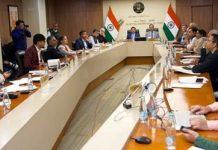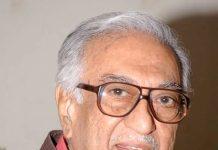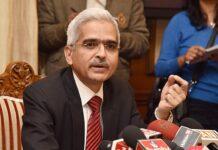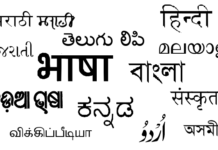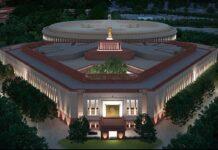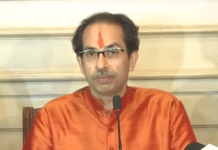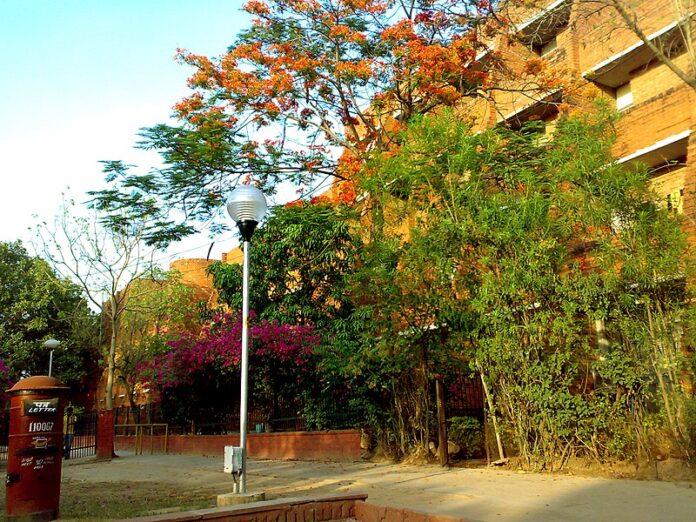‘’JNU and Jamia Milia Islamia witness ugly scenes over screening of BBC Documentary’’ – nothing surprising actually. CAA protests to BBC documentary, both JNU and Jamia and many other top universities in India are routinely in news for political movements and unrests in their campuses. Publicly funded and paid for out of the taxpayers’ money, these institutions of higher learning prima facie, appear more as a political nursery than academia mandated, at taxpayers’ cost, to educate/train human resources to become researchers, innovators, entrepreneurs and other professionals dedicated to personal, societal and national development. Sure, in post-independence India, universities are not mandated to churn out professional politicians any more – this job is now left to deeply entrenched electoral process, from village panchayat to parliamentary elections, that provide a clear path for a career politician in representative politics with a reasonable caveat that ideology of revolutionary utopia is no longer tenable. But politicians will remain politicians so what need to be done is to make learners sensitive to the value of taxpayers’ hard-earned money and the imperative of their own personal and family development (if not national development). One way of doing this could be to look at universities as providers of higher education services as a part of larger national economy and running them on the principles of business management to ensure efficiency. Students will become buyers/users of services of universities who will pay the providers directly the cost of higher education. The same money that is currently used to provide grants to the universities will be used to pay tuition fees and living expenses to students directly who will in turn use it to pay the providers for their services. This way, the University Grant Commission will become a sectoral regulator. A new student finance body will need to be created that will approve education grants and loans to students on the basis of offer of admission and economic and social background of students (to ensure equity). Students will select university based on the ranking and quality of services that the universities provide. This will infuse much needed market competition among the Indian universities which is an imperative any way in view of recently published plan to allow reputed foreign universities to open and operate campuses in India. Indian universities will need to compete with the foreign universities for survival and to avoid creating ‘two-classes’ of educated Indians. India needs to move from the dyad of ‘user-provider’ to the triad of ‘user-payer –provider’ model to ensure efficiency, equity and quality in provisioning of higher education services.
Amid the news of India developing world’s first intranasal vaccine and the grand celebration of democracy in India in the form of 74th Republic Day, also came the reports of stone pelting, fights and protests by political student bodies such as SFI in India’s premier Universities JNU and JMI over screening of controversial BBC documentary which purportedly demeans integrity of Indian constitutional authorities, particularly supreme court.
Situated in the capital city New Delhi, both Jawaharlal Nehru University and Jamia Milia Islamia (lit. National Islamic University) were established by Acts of Parliament and are reputed central universities of eminence wholly funded by the government out of taxpayer’s money. Both are well known in India for the academic excellence as well as for nasty petty student politics that goes on in the campus. On occasions, both campuses appear more as political battle fields than as publicly funded research institutions of repute engaged in academic activities and nation building to yield ‘value’ for money spent by the people of India on them. In fact, JNU has a long pedigree of left politics since its inception and has produced many left leaders like Sita Ram Yechury and Kanhaiya Kumar (now Congressman). In the recent past, both the universities were at the centre stage of anti-CAA protests in Delhi.
The latest in the series is ‘disturbances’ in both the campuses over screening of second episode of BBC’s documentary ‘India: The Modi Question’ that questions then Gujarat CM Modi’s response to riots two decades ago and casts aspersions on the functioning of judicial system and the authority of the Indian Courts. Interestingly, Pakistan’s Hina Rabbani has used this documentary to defend Sharif government. Apparently, left wing students wanted public screening while the administration wished to discourage in anticipation of unrest in the campus. Yet screening went on and there are reports of ugly scenes of stone-pelting and police actions.
Students’ politics played important role in India’s freedom struggle. India achieved freedom in 1947 courtesy freedom fighters of shades. Subsequently, people of India framed their Constitution which came into being on 26th January 1950. As the largest functioning democracy, India is a welfare state that guarantees freedom and basic human rights to all, has an independent and highly assertive judiciary and a deeply rooted democratic tradition and electoral processes. People regularly elect governments which remain in power for a fixed term till they enjoy the confidence of the House.
In the past seven decades or so, a good higher education infrastructure has come up in India, curtesy successive government’s efforts. However, these institutions are largely publicly funded and are low on the criteria of efficiency and quality. There are several reasons for that but ‘students’ politics’ is one key reason. It took me five years to complete three years degree course in Ranchi University due delayed session largely caused by politics in the campus. It is not uncommon to find vitiated academic environment in campuses across the country even in reputed universities like JNU, Jamia, Jadavpur etc. Current episodes of campus unrest in response to BBC documentary is just a tip of the iceberg.
Post-independence, the mandate to the Indian universities is to educate /train Indian human resources to become researchers, innovators, entrepreneurs and other professionals dedicated to personal, family and national development and justify value for public money spent on operating them. Being a nursery for future politicians could no longer be raison d’être for their existence which is well taken care of by the clear career pathway of professional politics in deeply entrenched parliamentary representative democracy from village panchayat to parliament level which also has adequate space for revolutionary ideologies of different shades within.
One of the ways to correct the current status quo is to sensitise students to the value of taxpayers’ hard-earned money and the imperative of their own personal and family development (if not national development) which in turn requires change in the way India looks at Institutions of higher learning from ‘public facility’ to ‘provider of services run efficiently’.
Looking at universities as providers of higher education services as apart of larger national economy run and operated on the principles of business management has the potential to improve efficiency and quality.
Currently, the government both pays and provide services to the users (students) with the users remaining unaware about cost of services. What is needed is to have a payer – provider split. Under this, students will become buyers/users of services of universities. They will directly pay the providers (universities) the cost of higher education in the form tuition fees. Universities do not receive any fund from the government. Their main source of revenue will be tuition fee paid by the students who in turn will receive from the government. The same money that is currently used to provide grants to the universities will be used to pay tuition fee and living expenses to students directly who will in turn use it pay the providers for their services. This way, the University Grant Commission becomes the sectoral regulator.
A new student finance body will need to be created that will provide 100% funds to meet tuition fees and living expenses to all applicant students in the form of education grants and loans on the basis of offer of admission from the universities. Economic and social background of students can be factored in to ensure equity.
Students will select course and provider (university) based on the ranking and quality of services that the universities provide implying universities will compete with each other to attract students to generate revenue. Thus, this will infuse much needed market competition among the Indian universities which is an imperative any way in view of recently published plan to allow reputed foreign universities to open and operate campuses in India. Indian universities will need to compete with the foreign universities for survival and to avoid creating ‘two-classes’ of educated Indians.
India needs to move from the dyad of ‘user-provider’ to the triad of ‘user-payer –provider’ model to ensure triple objectives of efficiency, equity and quality in higher education.
***
Related article:
India to Allow Reputed Foreign Universities to Open Campuses



